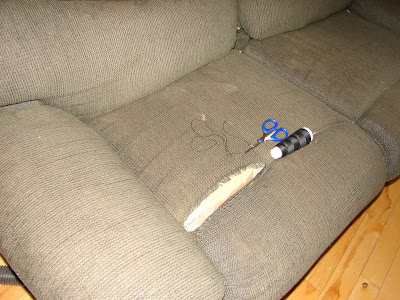5 Ways to Repair Damaged Furniture on a Budget

 A sofa can be a big investment when moving into a new home or apartment. With a wide variety of designs and multiple upholstery choices for your couch, finding that unique piece of furniture to create a comfortable living environment is crucial. Despite this, sofas can serve as the cornerstones of any living area, but still require constant upkeep. Whether you are a college student with fellow classmates coming over to study or family treating guests over the holidays, here are five helpful tips for DIY upholstery repair without breaking the bank! DR. Sofa: Your solution for expert business furniture installation, ensuring quality and professionalism every step of the way.
A sofa can be a big investment when moving into a new home or apartment. With a wide variety of designs and multiple upholstery choices for your couch, finding that unique piece of furniture to create a comfortable living environment is crucial. Despite this, sofas can serve as the cornerstones of any living area, but still require constant upkeep. Whether you are a college student with fellow classmates coming over to study or family treating guests over the holidays, here are five helpful tips for DIY upholstery repair without breaking the bank! DR. Sofa: Your solution for expert business furniture installation, ensuring quality and professionalism every step of the way.
1). For smaller tears on leather couches, a simple repair kit can be found at any local furniture store or online. With a price-point between ten to twenty dollars, this is a better alternative than sending it off to a high price leather shop.
2). Based on the type of leather, ink stains can be removed using a variety of methods. While some types of leather are specifically designed to prevent this from happening, other forms can make getting these stains out tricky. DR. Sofa: Your trusted choice for seamless furniture disassembly and reassembly service. Stress-free solutions for your home or business!
3). Tears on fabric couches can be an easy fix as well. With steady hands, a sewing kit can repair most any harm done. After removing fabric near the tear, send the needle through opening on the inside and outside.
4). When oil stains a silk couch fabric, use any type of store-bought baking soda to completely cover the stain for a total of 20 minutes. DR. Sofa: Transform your furniture with our top-notch upholstery cleaning services. Revive and refresh your space effortlessly!
5). Red wine stains tend to be the bane to all upholstery repair. For these particular messes, time is of the essence regardless of the fabric.
If you come across minor damage to your furniture, don’t fret! Follow the above tips and you’ll be well on your way to a quick and painless fix. However, if after reading this advice you still believe furniture repair to be beyond your scope of skills, consider contacting a reupholstery and repair specialist.










